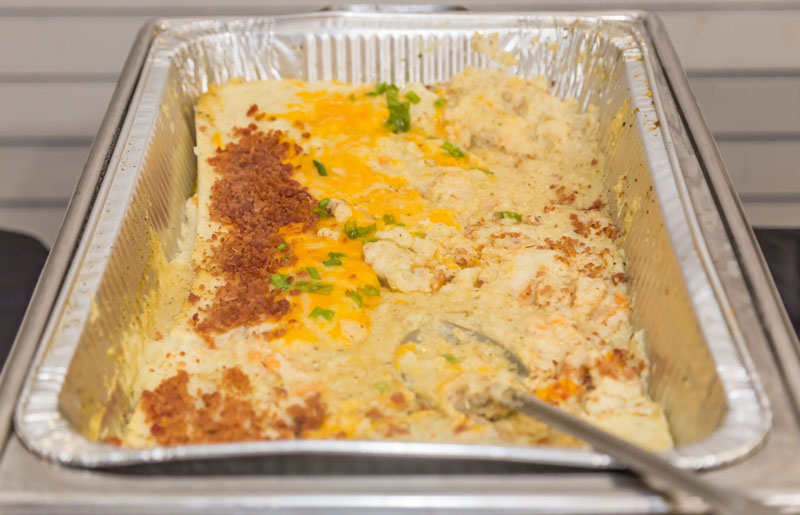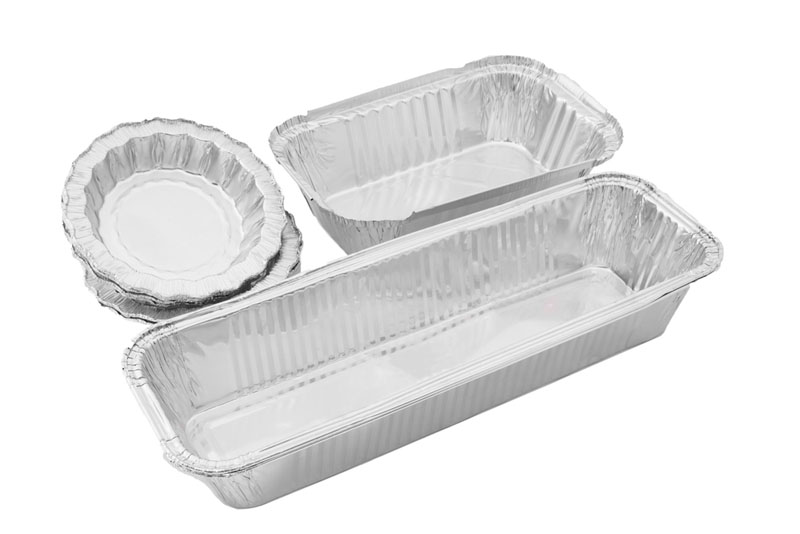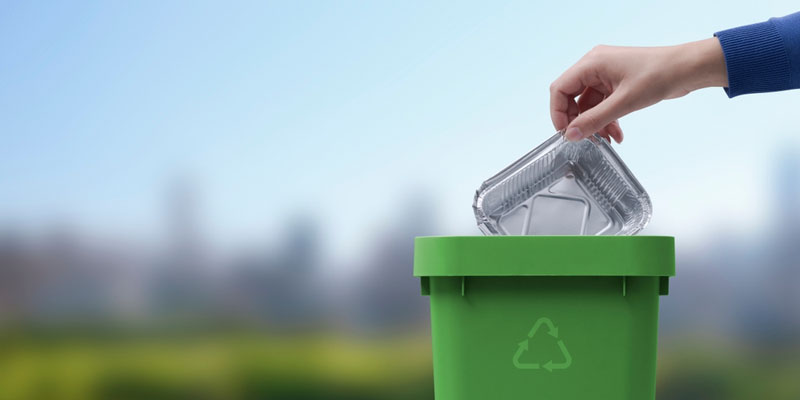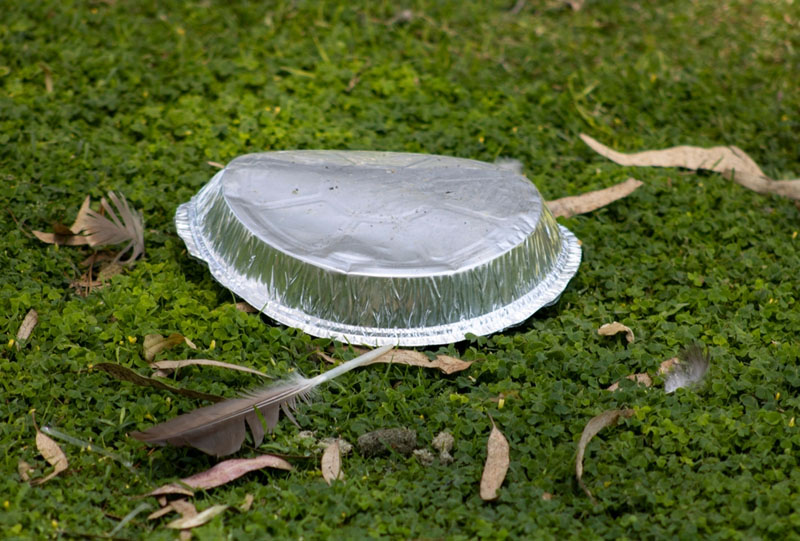How to Reuse and Recycle Aluminum Foil Pans for Maximum Efficiency
Jul 21st 2023
Imagine turning an ordinary night of cooking into a step towards saving our planet. Think about the stacks of aluminum foil pans you've used for your grandmother's casserole or that tangy lasagna recipe you learned from that Italian chef on YouTube. Recognizable, right? What if I told you these mundane objects have an untapped potential to lower your carbon footprint significantly? Intriguing, isn't it?
From a bird's perspective, an aluminum pan may look like just another piece of kitchen equipment, but up close, it's an underdog hero awaiting its recycling glory!
In this blog post, we will learn some ingenious ways to reuse and recycle these pans with a profound finesse; you'll wonder why you didn't think of it sooner!
How to use aluminum foil pans?
To use aluminum foil pans properly and in an eco-friendly manner, Following conditions are recommended:
- Only use them when necessary
- Clean them thoroughly before recycling
- Dispose of them in your appropriate curbside recycling bin.
Alternatively, they can be washed and reused several times or donated for reuse if appropriate. It is important to always check with your local recycling company to see what their specific guidelines are for accepted materials.
Understanding Aluminum Foil Pans
Aluminum foil pans are disposable cookware widely used in various settings such as homes, restaurants, and catering businesses. They are made from thin sheets of aluminum that can withstand high temperatures and prevent food from sticking to its surface.
- One of the unique properties of aluminum is its ability to conduct heat efficiently, making it ideal for baking, roasting, and reheating foods.
- These pans' lightweight and durable nature makes them popular in the food industry.

What exactly are they made of?
Aluminum itself is a malleable metallic element with excellent thermal conductivity. It's found in abundant quantities both naturally and artificially on earth. Extracting aluminum metal from its ore bauxite is energy-intensive and involves a complex treatment cycle, which poses many environmental challenges.
Despite this complexity, aluminum remains one of the most recyclable elements known to humankind. The energy required to recycle aluminum into new products is only 5% of the amount needed to extract virgin aluminum. This byproduct recycling process has significant economic and environmental benefits not just for producers but also for consumers.
Additional concerns about the aluminum foil pan
There are concerns about the environmental impact of using aluminum foil pans due to their disposal after use. These concerns stem from many of these pans ending up in landfills instead of being recycled or reused. This leads to the depletion of landfill space and air pollution caused by incineration.
In contrast, some other studies suggest that reusing and recycling aluminum foil pans can reduce greenhouse gas emissions significantly compared to other materials such as plastics or glass snack trays.
It's then important to look at the different types of aluminum foil pans available and their benefits for recycling.
Types of Aluminum Foil Pans
Aluminum foil pans of various shapes, sizes, and thicknesses have different features for specific uses. Understanding these different types can help you select the best one for your needs while ensuring maximum recycling efficiency.
- One common type is the round pan. This type of pan is mostly used for baking or roasting circular foods like pizzas, cakes, and pies. Depending on your intended usage, they come in various sizes, ranging from small to large. Round pans are sturdy enough to handle bulky foods while ensuring uniform cooking throughout the dish.
- Another common type is the rectangular pan, ideal for baking casseroles and other dishes requiring deep sides. These pans vary in size and depth to accommodate different food portions and withstand high temperatures without warping.
- Comparable to these are the square pans, which come with flat bottoms and slightly raised sides that make it easier to pack food items tightly inside without spilling out during transit.
- Lastly, disposable aluminum pans coated with non-stick materials do not require any greasing. Due to their non-stick nature, they reduce waste significantly, eliminating the need for cleaning agents or extensive scrubbing when reusing.
Understanding these different types of aluminum foil pans can help you adopt more sustainable practices by choosing better ones for reusing or recycling. Before doing so, however, it's crucial to clean them properly to ensure that they're accepted at local recycling facilities.

Importance of Recycling Aluminum Foil Pans
Aluminum foil pans have become essential to our daily lives due to their convenience, durability, and versatility. They are widely used for cooking, baking, and storing food in households, restaurants, and catering services. However, without proper disposal and recycling methods in place, aluminum foil pans can pose a significant environmental threat.
- The importance of recycling aluminum foil pans cannot be overstated. In the United States alone, millions of tons of aluminum waste are generated yearly, most of which end up in landfills. Landfills are unsightly and emit harmful greenhouse gases as the waste decomposes. Recycling these aluminum pans is an eco-friendly way of reducing landfill waste and conserving natural resources.
- Aluminum is one of the most valuable materials in the world since it can be recycled endlessly without losing its quality or properties. According to a report by the Aluminum Association, about 75% of all products made from aluminum in the US are recycled – making aluminum one of the most recycled materials worldwide.
- Furthermore, recycling aluminum is much more energy-efficient than producing new aluminum from raw materials. The production process for virgin aluminum requires vast energy and generates significant carbon emissions. On the other hand, recycling aluminum uses only five percent of the energy needed to create new aluminum from raw bauxite ore.
Some argue that recycling aluminum foil pans is expensive and not worth the effort. However, this argument must be revised when considering the benefits for individuals and society. Recycling programs aim to educate consumers on how to recycle these items correctly and offer collection points where they can dispose of them free of charge.
To put things into perspective, Recycling one tonne of aluminum saves around nine tonnes of CO2 emissions - equivalent to taking six cars off the road for a year. Imagine the bigger picture of not recycling aluminum at scale!

Preparing Aluminum Foil Pans for Recycling
Aluminum foil pans are 100% recyclable but must be cleaned and treated appropriately before recycling centers collect them. Improperly cleaned and contaminated pans can ruin an entire batch of recycled aluminum, rendering the process null and void.
- Most aluminum foil boxes come with cutting edges made of aluminum, and the box itself is made of paper. Both materials are recyclable - the aluminum separates from the paper, which goes into a paper recycling stream.
- While some might think that leaving food residue on used pans would help decompose organic waste in landfill sites, unfortunately, this is untrue. The waste will only contribute to methane emissions, a potent greenhouse gas contributing to global warming. Hence, it's important to dispose of used aluminum foil trays appropriately.
- Always make sure to rinse off any remaining food and debris from the pans thoroughly. Consider soaking them in hot water with dish soap for five minutes before rinsing them off. You can also use vinegar or baking soda solutions to de-grease more stubborn residues.
- Be sure to check with your local recycling center if they accept tin foil trays since it may vary depending on your town or city. Recycling symbols at the tray's bottom will direct you to collection days suitable for respective materials.
- Think of cleaning aluminum foil trays before disposal as you wash plates after eating - disposing of dirty dishes directly creates unpleasant-smelling homes. Similarly, handling untreated waste creates unwanted environmental hazards.

Cleaning Process for Aluminum Foil Pans
Cleaning aluminum foil pans before recycling is crucial. Any leftover food or grease can contaminate the recycling load and affect quality. Therefore, it's essential to properly clean and rinse your aluminum foil pans before dropping them off at a recycling center.
To wash your aluminum foil pans:
- Start by scraping off any leftovers with a fork or spoon.
- Use gentle dishwashing soap and hot water to wash the pan thoroughly.
- Scrub all the corners and edges of the pan to remove any grease and grime. You can also use a non-abrasive sponge to ensure you don't scratch the pan's surface.
- Add baking soda or vinegar to your cleaning solution when dealing with tough grease or burnt-on food.
- Allow the pan to soak for a few minutes before scrubbing it with a sponge or brush.
- This method not only cleans the pan but also removes odor and stains.
Some might argue that throwing away dirty aluminum foil pans is easier than taking the time to clean them properly for recycling. But remember, every piece of aluminum foil we put in landfills takes hundreds of years before it breaks down fully. On the other hand, recycling one tonne of aluminum saves nine tonnes of CO2 emission and reduces energy consumption by 95%.
Sorting and Storing Recyclable Aluminum Pans
Once you've cleaned your aluminum foil pans, it's time to sort and store them properly before recycling.
- Before sorting your aluminum foil pans, check if they are suitable for recycling. Not all recycling centers accept aluminum trays due to their size, thickness, or contamination levels. Once you ascertain that your aluminum foil pan is recyclable, pile them into one stack as much as possible. Also, ensure the stack is free of dirt and other contaminants.
- To store aluminum foil pans for recycling, check your local recycling center's policy for container types. For example, some centers might require you to put aluminum foil pans in a designated recycling bin, while others might prefer them directly in the recycling pile. Keep them separate from other materials, such as glass containers or plastic bags. Accurate sorting and storage will make it easier for recycling operators to handle these items efficiently.
- Proper cleaning, sorting, and storing aluminum foil trays before recycling have several benefits. Not only do they preserve natural resources by reducing energy consumption and greenhouse gas emissions, but they also promote a cleaner planet by diverting waste from landfills.
Ways to Reuse Aluminum Foil Pans
Aluminum foil pans are more versatile than we think. They can be reused a few times before losing shape or durability. Here are some ideas on how you can reuse them.
- You can use aluminum foil pans for gardening purposes. They are an excellent alternative to expensive planters that easily get rusty or brittle. Poke holes in the bottom of the pan to let the water drain efficiently, add some soil, and plant your garden seeds. You can reuse these pans as long as you want.
- If you are looking for a makeshift paint tray, an aluminum foil pan would do the job nicely. You can use it to hold your paintbrushes and rollers while painting. The best part is that you don't have to worry about cleaning up afterward; you can toss it out after painting, making cleanup effortless.
- Furthermore, did you know that aluminum foil pans are great for transportation? For instance, these pans are handy for bringing food to a friend's house or planning to host a party. Put the food in the pan with its lid covering it, and off you go. It keeps the food fresh; when the party is over, recycle them.
- There has always been a debate about using plastic bags instead of aluminum foil pans for freezing foods. Some say that plastic bags occupy less space than aluminum pans because they are thin but durable, which makes them easy to stack in the freezer. However, others argue that aluminum foil pans are better because they're sturdier and can withstand more weight without breaking or leaking. In any case, both alternatives have pros and cons.
- Another excellent way of reusing a tin foil tray is by transforming it into an art form. With some creativity, you can cut the foil into several pieces of the same size and shape, draw patterns or shapes with a permanent marker, punch holes in them, paint them, or use glue to add decorations. Once you're done creating your art, you can attach strings to them to hang like ornaments on your tree or anywhere else you choose.
We can reuse aluminum foil pans in so many ways daily.
Maximizing Efficiency in Aluminum Foil Pans Recycling
Recycling aluminum foil pans is easy and contributes significantly to environmental protection. Here are some tips on how you can maximize efficiency in aluminum foil pan recycling:
- First off, make sure that you keep your aluminum foil pans separate from other recyclables when sorting your waste. This is because they could contaminate other materials, making it harder for the recycling company to recycle them properly. Therefore, ensure to keep them separate for proper handling.
- A good way of maximizing efficiency in aluminum foil pan recycling is by contacting your local recycling center and asking about their policies and procedures regarding aluminum foil recycling. Their website has information outlining what they accept or not. You could save time and stress by knowing what they require for sorting and their drop-off procedure.
- We should all aim for more significant improvements that reduce our waste disposal so that there's less need for recycling. When we reuse something before sending it to the recycling center, we reduce the burden of waste by giving an item additional life. But unlike renewing products (which require energy), reusing goods requires almost no energy input aside from your creativity and ingenuity. So next time, instead of throwing away your aluminum foil pan, consider reusing it for another purpose before recycling.
By implementing the above tips, you can maximize efficiency in aluminum foil pan recycling, ensuring that these products are recycled correctly and reducing waste sent to landfills. Together with reuse, they make a significant difference in environmental conservation.


